
Summer specks provide Southport fishermen with plenty of hot action.
“Look at your shrimp up and jumping around,” Capt. Brandon Dean said with a burst of urgency and excitement in his voice. “There’s something looking at him, and he’s afraid he’s about to get eaten. You better get ready — you’re about to have a strike.”
Dean had barely finished when the water beside the cork was swept with the stroke of a powerful tail and the cork was unceremoniously jerked under.
“Get him,” Dean said in an tone that was both command and instruction. “Pop that hook to him, and let’s see who wanted a shrimp dinner.”
The response was automatic, and with a deep sweep of the rod, the hook connected and the struggle began. The fish surged away from the bank toward deeper water and turned away from the force tugging on its jaw. The light spinning rod bent deeply, and the little reel squealed as it gave up line. Then came the head shaking, a telltale sign that the struggling fish was probably a trout.
After about a minute, the tired trout allowed itself to be led to the boat and maneuvered into a landing net. It wasn’t happy with the situation and tried to surge away, but Dean’s quick scoop was a non-refusable invitation, and it found itself in the boat.
It wasn’t a lunker, but it was a nice late summer trout, and Dean had delivered on his promise to find some.
Dean, who guides out of Southport Angler Outfitters, likes many kinds of fishing, but trout, flounder and red drum have gradually developed into his specialties. He had predicted he might have to work through a few spots, but he had been pretty sure he’d eventually find them, even in the 80-degree-plus waters of the Cape Fear River near Southport.
Now that he’d found them, the other part of the quest was to also catch some on topwater lures. With sunset approaching, that task certainly became easier.
The school of trout Dean had found was holding in deep water and would never hit on top, but specks bit consistently in four to eight feet of water. After a while, however, Dean made another move.
The next place he stopped was a little more protected from the southeasterly wind and looked really fishy. The sun was also less than an hour from setting.
On his third cast, a spike speck couldn’t resist a Zara Spook Jr. and slammed it. As a smile spread over Dean’s face, he removed the hooks and released the trout. A couple of casts later, a trout blew up behind the lure but missed it. Dean stayed until dark and played tag-and-release with specks and some puppy drum that saw the party and had to crash it.
It took some heat lightning a few miles inland to run Dean off the water as the dark approached.
Sometimes, even when the water seems like it’s hot enough to boil a trout, it’s just right for them to bite, if you know when and where to go and what to do when you get there.
“Once the water gets hot during the summer, the trout decrease their activity, especially during the heat of the day,” Dean said. “One thing that gets them going is live shrimp. It’s a great way to tempt trout into biting when the water is hot.”
Trout, he explained, are usually active twice a day during the summer: early morning and late afternoon. Those are the times to get them to chase topwater lures, and to improve his chances, Dean downsizes his offerings during the hottest weather; he switches from full-size to smaller versions of Spooks and Top Dogs. Spook Juniors, She Dogs and Pups become main fare.
Live shrimp, however, are always a good ticket to summer trout action. Just about every inshore fish will eat a shrimp, and suspending them under floats is usually a recipe for catching a variety of species, including puppy drum, flounder, bluefish and even an occasional ladyfish.
The other key, he said, is to take advantage of the tidal stage you want to fish — in a number of different areas.
“Most folks don’t understand the tide isn’t high or low at all places at the same time,” Dean said. “As you get farther from the inlet, the tide is later than on the tide charts. This allows us to fish the same stage of the tide for several hours in different locations.”
Like many guides, Dean uses a treble hook when he fishes live shrimp for trout. Most use a small No. 8, but Dean likes a No. 6, which is small, but is still larger and holds the shrimp better while rarely being sucked deep by a fish.
Dean hooks the shrimp with one point of the treble hook just under the horn so it will come out the other side, just behind the eyes. A shrimp has two dark spots on its head; stick a hook through them and the shrimp dies quickly. The best location is just forward of the dark spots and behind the eyes, approximately a quarter-inch behind where the horn protrudes from the head.


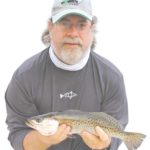
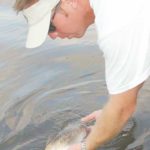
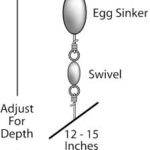
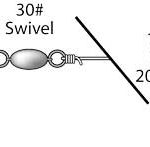
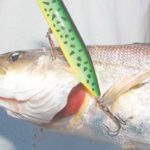
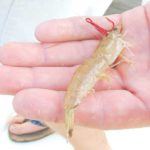



Be the first to comment